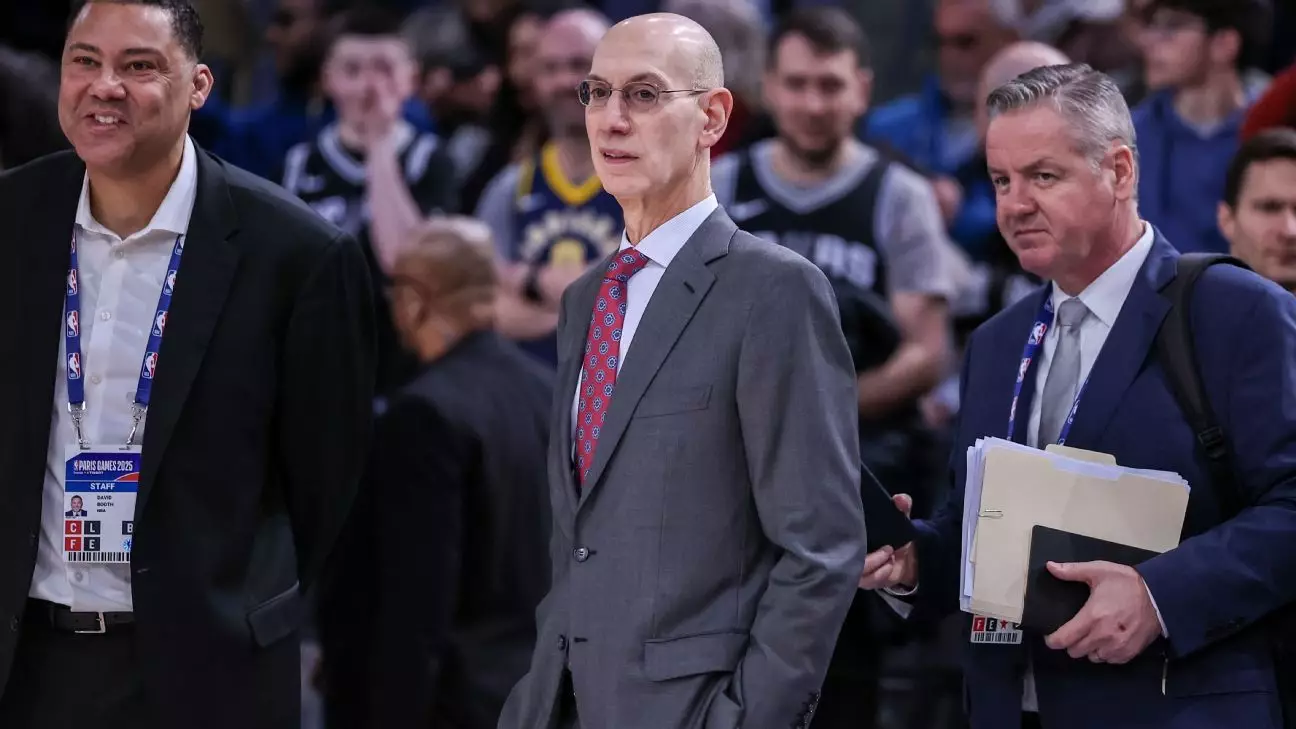The National Basketball Association (NBA) holds a unique position as a premier global sports league, and recent comments by Commissioner Adam Silver have ignited discussions about the potential restructuring of game formats. Specifically, Silver suggested the possibility of shortening NBA games from their traditional 48 minutes to a more contemporary model of 40 minutes, dividing play into four quarters of 10 minutes each. This idea resonates with the ever-evolving landscape of sports viewership and the NBA’s aspirations to adapt to modern viewing habits.
In his appearance on “The Dan Patrick Show,” Silver’s reasoning centered around the need for the NBA to align with global basketball standards. Currently, the NBA is the only major basketball league that maintains a 48-minute game structure—an anomaly in the context of international play, where Olympic and college basketball games typically last for 40 minutes. Silver’s vision of shortening game duration aims to refine the viewing experience, proposing that a two-hour television slot is more conducive to contemporary audience expectations.
The data reflects a shift in media consumption, with viewers seeking efficiency in how they engage with sports. NBA games currently average around 2 hours and 16 minutes in length; this is a significant commitment for fans. The suggestion of transitioning to 10-minute quarters hints at a recognition that as technology and lifestyle evolve, so too should sports entertainment to retain its appeal.
However, the implications of such a change could ripple throughout various facets of the game. Reducing game length could significantly affect player performance dynamics. With an average playing time of 38.4 minutes for top players like Mikal Bridges, the potential for athletes to play entire games more often becomes increasingly feasible. This change could elevate the significance of star players, allowing them to have a more considerable impact per game due to the decreased total minutes played.
Nevertheless, the alteration of game duration raises concerns regarding historical records and the essence of basketball itself. Coaches like Tom Thibodeau and Michael Malone have voiced apprehensions about the potential for inconsistency and disruption of established benchmarks within the sport. Shifting to a shorter format risks rendering many single-game and single-season records unassailable, thus altering the historical narrative of the league.
The opinions of seasoned coaches in the NBA reflect a deep-seated respect for the traditions of the sport. Both Thibodeau and Malone have articulated strong resistance to the proposal, emphasizing the importance of maintaining the integrity of statistics and the traditional experience of basketball. While acknowledging the league’s motivation to respond to viewership trends, they caution against a slippery slope that prioritizes ratings over the purity of the game.
Malone’s reference to the notion of the NBA becoming like “Barnum & Bailey” evokes images of a circus, suggesting that overly dramatizing the sport for the sake of entertainment could compromise its fundamental integrity. This analogy serves as a powerful reminder that although popularity and engagement are crucial, there is an inherent danger in sacrificing the essence of basketball in pursuit of fleeting viewership metrics.
The dialogue surrounding the potential transition to a shorter game reflects a broader concern within sports about balancing tradition with modernity. Finding common ground between maintaining the historical significance of the NBA and adapting to the preferences of a new generation of fans is no small feat. While commissioners and league officials strive to innovate and attract a broader audience, consideration must also be given to those who have long cherished the rich history and traditions of the sport.
As the NBA stands at this crossroads, the decision to alter its game structure will require careful deliberation not only on the statistics and records but also on how such a shift will resonate with both current and future generations of fans. The path forward must harmonize the legacy of the league with the evolving demands of its audience, ensuring that as the game progresses, it retains the characteristics that have made it beloved for decades.


Leave a Reply